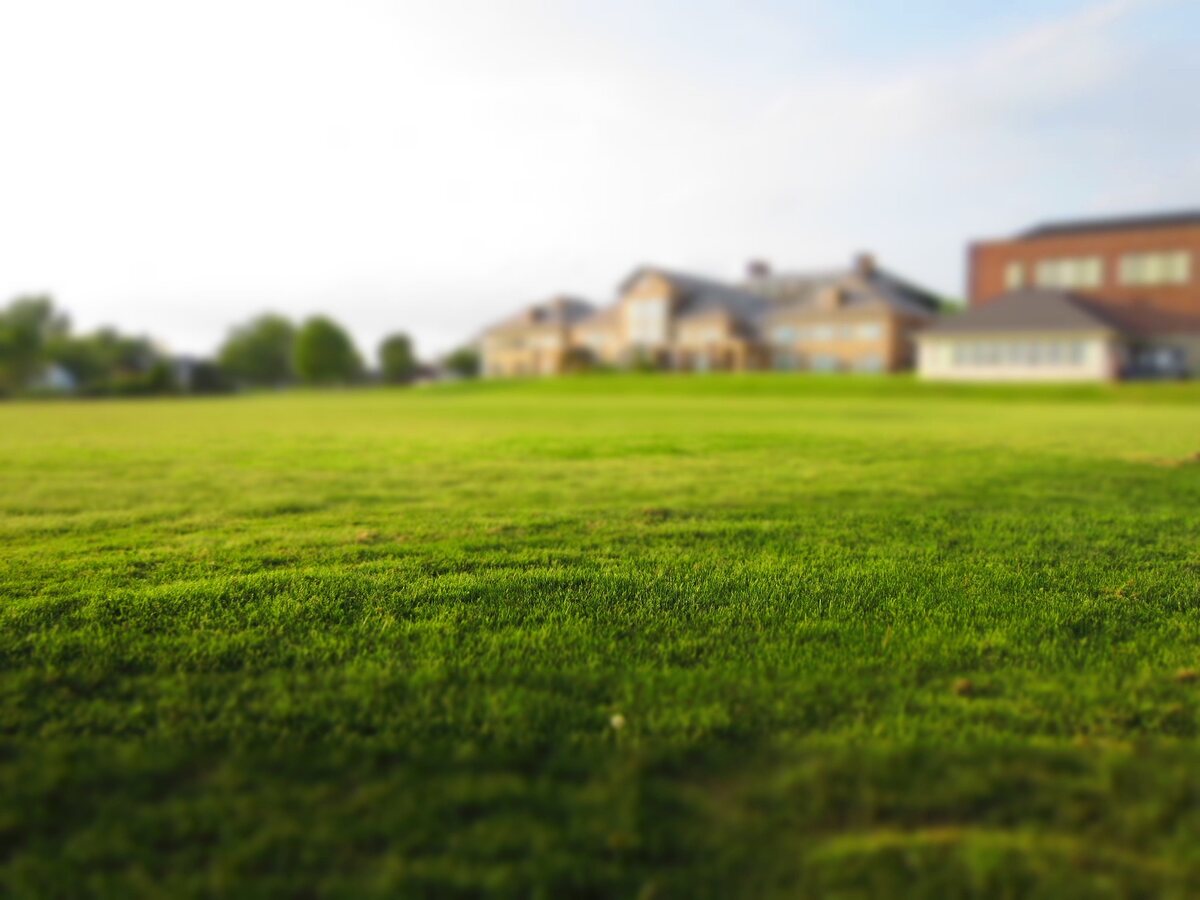
Located 30 miles from Austin and nicknamed the Red Poppy Capital of Texas, Georgetown is a city of calm winds and long summers — a perfect place to enjoy outdoor activities and cultivate your lawn. To help you grow (and enjoy) a beautiful warm-season lawn, we’ve collected the four best grass types for Georgetown.
Bermudagrass
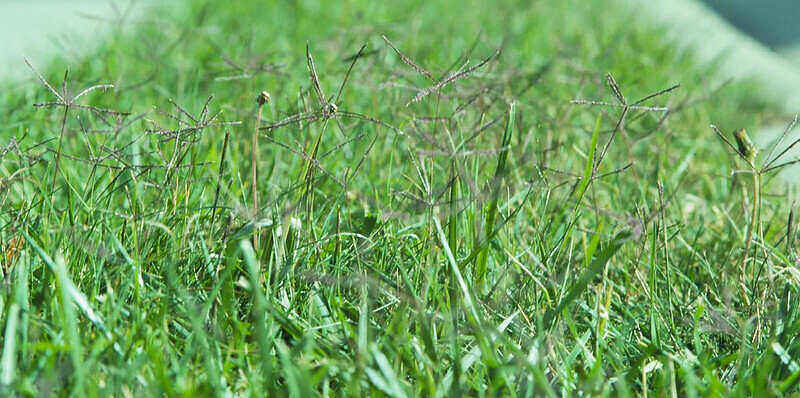
Photo Credit: Matt Lavin / Flickr / CC BY-SA 2.0
Bermudagrass is a versatile warm-season perennial that has many uses, from home lawns to sports fields. It is a very resilient grass, with a high tolerance for drought, salinity, and traffic and the ability to recover quickly from damage.
Since it needs full sunlight exposure, Bermudagrass is an ideal choice for sunny locations such as Georgetown. Another positive point is that it has good resistance to disease problems, so that’s one less maintenance worry to have in mind.
Bermudagrass hybrids are also available but not recommended for home lawns in most cases. The exception is the homeowner who wants (and is willing to maintain) a top-tier lawn. Some hybrids offer darker green leaves and a finer leaf texture, which is a plus for some grass aficionados. A downside is that the hybrids are sterile, meaning they’re available only as sod or sprigs.
- Classification: Warm-season grass
- Spreads by: Stolons and rhizomes
- Shade tolerance: Low; thrives in full sun
- Drought tolerance: High
- Traffic tolerance: High
- Maintenance needs: Low to high. Seeded types require infrequent watering and moderate amounts of nitrogen. Hybrid types are high-maintenance, needing frequent mowing and higher amounts of nitrogen fertilizer.
- Recommended mowing height: Set the mowing height between 0.5 and 1.5 inches for hybrid bermudagrass cultivars. Mow common bermudagrass down to 1.5 to 2.5 inches.
- Potential for disease: Good resistance to disease, although diseases are common; low resistance to insects
- Soil pH: 6-6.5
- Soil type: Tolerates most soil types
- Other notes: The hybrid varieties are more frequently indicated for golf courses and sports fields than home lawns. Additionally, Bermudagrass produces thatch because of how fast it grows, so dethatching at least once per year in late spring/early summer is an important maintenance step for this turfgrass.
Grass Seed Options:
– Pennington Bermudagrass Bare Spot (5 lb. bag)
– Pennington Smart Seed Bermudagrass Mix (8.75-lb. bag)
– Scotts Turf Builder Bermudagrass (10-lb. bag)
– Hancock Seed Co. Bermudagrass (50-lb. bag)
Buffalograss
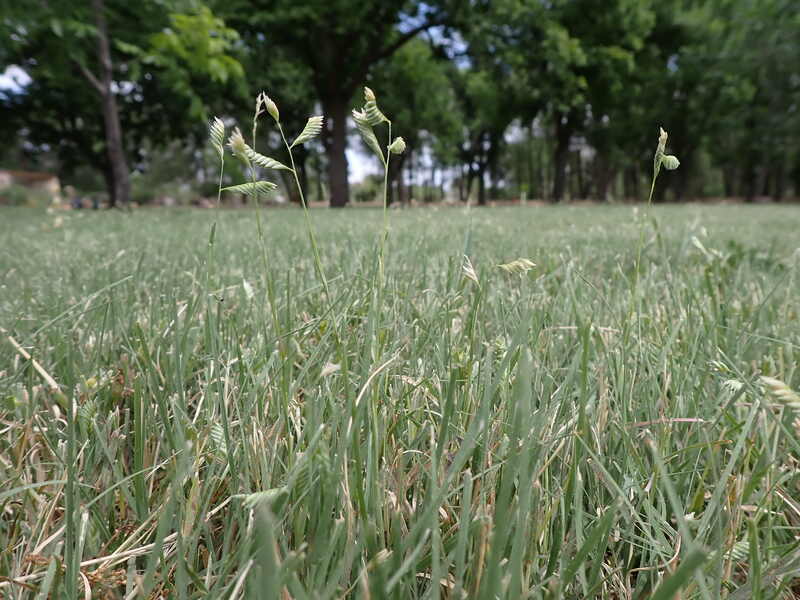
Photo Credit: Matt Lavin / Flickr / CC BY-SA 2.0
Native to the North American Great Plains, this grayish-green colored grass thrives in areas with full sun while also being very drought-tolerant, making it a perfect fit for Georgetown weather. It is considered a low-maintenance grass for low-traffic areas, with great winter survival through dormancy.
One important note, however, is that this grass type has a high tendency to grow weeds. Since weeds can greatly affect home lawn aesthetics, Buffalograss can be a no-go according to some Homeowners Associations’ lawn guidelines. Remember to check with your HOA before choosing this turfgrass.
- Classification: Warm-season grass
- Spreads by: Stolons
- Shade tolerance: Low
- Drought tolerance: High
- Traffic tolerance: Low
- Maintenance needs: Low watering and fertilizing frequency. Low to moderate mowing frequency (every 7-14 days). Mowing before emerging from winter dormancy will help remove brown and bring back the green color. Weed control can be an issue.
- Recommended mowing height: Set the mowing height between 2 and 3 inches.
- Potential for disease: Good tolerance against diseases and insects
- Soil pH: 6.5-7.5
- Soil type: Native soils, not sandy soils
- Other notes: It is a good choice for a low-maintenance yard if it gets full sun exposure. Differently from other turfgrasses, Buffalograss has male and female flowers in separate inflorescences. Dethatching and aeration will not be a worry for buffalograss lawns, since this turfgrass usually doesn’t need it.
Grass Seed Options:
– Everwilde Farms Buffalograss Seeds (1 lb. of seeds)
– Scotts Pursue Buffalograss with Natural Seed (1 lb. of seeds)
– Outsidepride Perennial Buffalo Grass Seed (2 lb. of seeds)
St. Augustinegrass
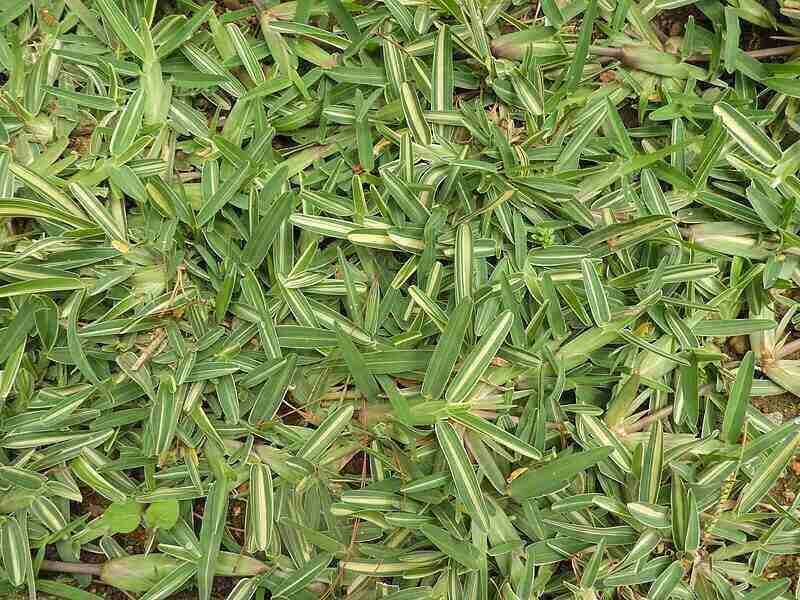
Photo Credit: Yercaud-elango / Wikimedia Commons / CC BY-SA 4.0
Out of all the warm-season grass types, St. Augustinegrass is the most shade-tolerant, although it is less drought-tolerant than Bermudagrass or Zoysiagrass. It is best adapted to Southeast Texas, although it can be successfully grown in Central Texas with additional irrigation. It does not tolerate high traffic.
- Classification: Warm-season grass
- Spreads by: Stolons
- Shade tolerance: Moderate. It is the most shade-tolerant warm-season grass.
- Drought tolerance: Moderate
- Traffic tolerance: Low
- Maintenance needs: Moderate to high. It requires moderate to high amounts of nitrogen and needs regular dethatching.
- Recommended mowing height: Set the mowing height between 3.5 and 4 inches.
- Potential for disease: Moderate to high
- Soil pH: 6-7.5
- Soil type: Tolerates many soil types; prefers moderately fertile and moist (not waterlogged) soils; doesn’t tolerate soil compaction
- Other notes: It is a popular choice for home lawns since it performs well when mowed with rotary mowers and has the best shade tolerance out of the warm-season grass types. Dethatching should be done when the thatch layer is over 1 inch. Aeration will also improve soil conditions in compacted soils.
Grass Plug Options:
– Seed Ranch St Augustine Seville Grass Plugs (2 Trays)
– Seed Ranch St Augustine Floratam Grass Plugs (2 Trays)
Zoysiagrass
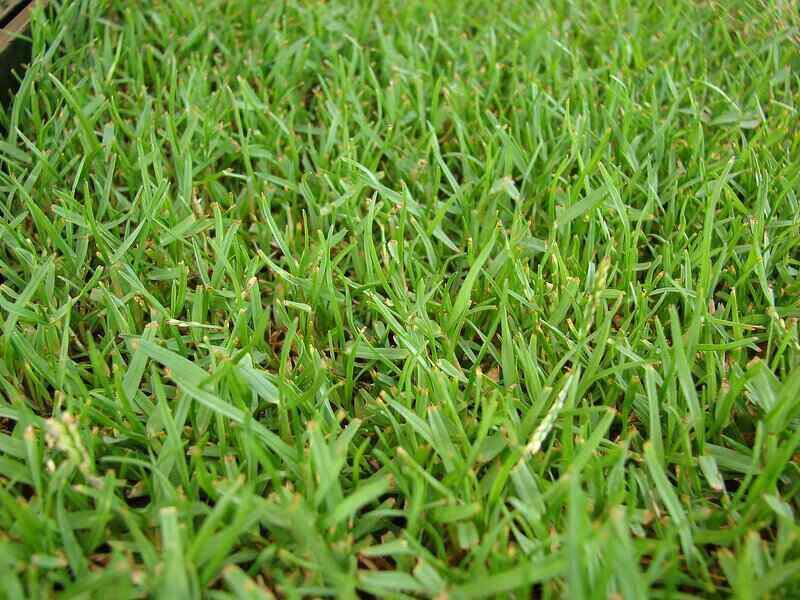
Photo Credit: Forest and Kim Starr / Wikimedia Commons / CC BY 3.0 US
Zoysiagrass is a well-adapted grass type throughout Eastern Texas, similar to Bermudagrass. It has a moderate to high drought tolerance, and a moderate tolerance to shade, depending on the variety. Zoysiagrass tends to turn brown during an extended drought.
Zoysiagrass does well on lawns and areas with moderate traffic. Due to its slow growth habit, seed and sprigs take a long time to grow in and cover an area, so sod is usually recommended.
- Classification: Warm-season grass
- Spreads by: Stolons and rhizomes
- Shade tolerance: Moderate
- Drought tolerance: Moderate
- Traffic tolerance: High, but recovers slowly from damage
- Maintenance needs: Low maintenance overall; requires little nitrogen fertilizer and moderate mowing frequency
- Recommended mowing height: Set mowing height between 1 and 2 inches.
- Potential for disease: Not prone to disease and insects; good disease tolerance overall
- Soil pH: 6-6.5
- Soil type: Well-draining, some cultivars more tolerant of a wide range of soils than others
- Other notes: One of the most diverse turfgrass species, with improved varieties that require less nitrogen than Bermudagrass. Experts recommend dethatching and aeration in late spring or early summer when the grass is going into its growing season.
Grass Plug and Seed Options:
– Zoysia Plugs (50 Large Grass Plugs)
– Zoysia Plugs (50 Full & Lush Grass Plugs)
– Zoysia Plugs (100 Plugs)
– Zoysia Emerald Grass Seeds (1/8 lb. of seeds)
– Zenith Zenith Grass Seeds (1/8 lb. of seeds)
How to Choose the Best Grass Type for Your Georgetown Lawn
Need a little extra help choosing the best grass for your lawn? Here are a few more tips to help you decide.
High Maintenance vs. Low Maintenance
Maintenance is essential to your lawn’s health, so before making a choice, think about how much time and financial resources you have to spend on your lawn. High-maintenance grass types require frequent mowing, fertilization, and irrigation, while low-maintenance ones do well with less work.
- Moderate- to high-maintenance grasses: Bermudagrass, St. Augustinegrass
- Low-maintenance grasses: Buffalograss, Zoysiagrass
Drought Tolerance
Drought can be especially harsh on our lawns, so resistance to drought is an important factor when deciding on the best turfgrass for your lawn. Remember that varieties with low or moderate drought resistance will need extra watering during this period.
- High drought tolerance: Bermudagrass, Buffalograss
- Moderate drought tolerance: Zoysiagrass, St. Augustinegrass
Shade Tolerance
How much shade does your yard get? Here is another important factor, since many turfgrasses are not shade-tolerant. Notice if your lawn area is always exposed to full sun, or if there are trees or buildings around that shade it during the day.
- Low shade tolerance: Bermudagrass, Buffalograss
- Moderate shade tolerance: Zoysiagrass, St. Augustinegrass
When to Bring in the Professionals
A landscaping professional can take a look at your Georgetown lawn and help you decide which grass type is the best fit for the soil, sun/shade, and your level of desired maintenance. If mowing is all you need at the moment, book a local lawn care pro to keep your lawn neat and tidy until you decide to start afresh with new grass.
LawnStarter participates in the Amazon Services LLC Associates Program, an affiliate advertising program. LawnStarter earns revenue from products promoted in this article.
Main Image Credit: Pixabay